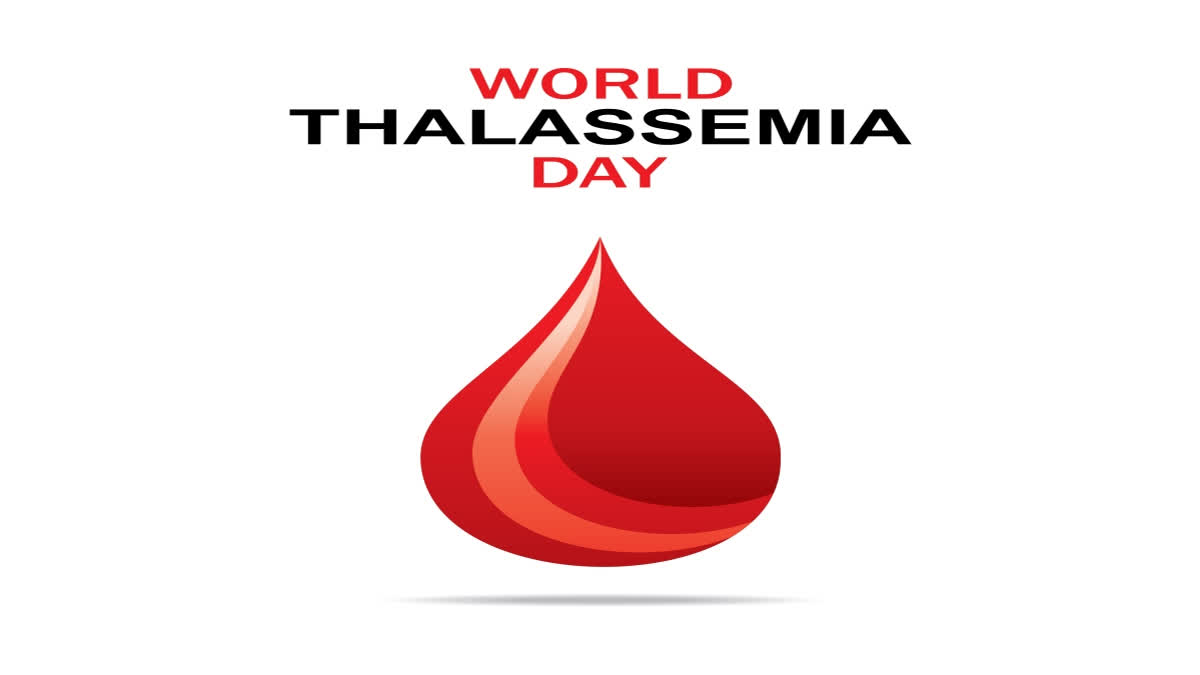Hyderabad: World Thalassemia Day is observed annually on May 8 to highlight the global impact of thalassemia and the ongoing efforts to support individuals affected by this inherited blood disorder.
This day is not merely a tribute to the resilience of thalassemia patients but also a rallying call to raise awareness, promote prevention, and advocate for accessible treatment options worldwide.
Origin and Significance: The roots of World Thalassemia Day trace back to 1994 when Panos Englezos, President and Founder of the Thalassemia International Federation, established this commemorative day in memory of his son George and other thalassemia patients.
Since then, it has become an annual observance to honour the courage of individuals battling thalassemia and to amplify the voices advocating for improved treatment and support systems.
Theme 2024: The theme for 2024, 'Empowering Lives, Embracing Progress: Equitable and Accessible Thalassemia Treatment for All,' highlights the critical need for equal access to quality care regardless of geographical location or socioeconomic status.
Understanding Thalassemia: Thalassemia is an inherited blood disorder characterised by reduced haemoglobin production, leading to anaemia and various health complications. It affects the body's ability to produce normal red blood cells, impairing oxygen transport and resulting in symptoms such as:
Fatigue
Weakness
Pale or yellowish skin
Facial bone deformities
Slow growth
Abdominal swelling
Dark urine
There are two main types of thalassemia: Alpha Thalassemia and Beta Thalassemia, each with different sub-types and severity levels.
Prevention and Management: Prevention strategies play a crucial role in reducing the burden of thalassemia, emphasising the importance of genetic screening and counselling for carriers. Couples identified as carriers can make informed decisions about family planning, reducing the risk of passing the disorder to their children. Additionally, early diagnosis and comprehensive management are essential for individuals living with thalassemia. Treatment may include:
Regular blood transfusions to replenish haemoglobin levels
Iron chelation therapy to remove excess iron from the body
Folic acid supplementation to support red blood cell production
Stem cell or bone marrow transplantation for severe cases
Do's and Don'ts If you're a Thalassemia Minor or your partner:
If one parent is Thalassemia Minor and the other is Normal:
The gene that comes to the child from the normal parent will always be the 'normal' gene
The gene that comes from the parent, Thalassemia Minor could either be the 'altered' one or the 'normal' one
There is a 50 per cent chance that the child will be 'Normal' and a 50 per cent chance that the child will be a Thalassemia Minor. But in both cases a child can be expected to lead a normal healthy life.
If both partners in a marriage are Thalassemia Minor, there are the following possibilities:
Both mother and father pass on the normal gene – the child is 'normal'
The mother passes on the normal gene and the father passes on the altered gene – the child is a Thalassemia Minor
The mother passes on the altered gene and the father passes on the normal gene – the child is a Thalassemia Minor
Both mother and father pass on the altered gene – the child is Thalassemia major (serious problem)
Thus a Thalassemia Major child is born only if both the mother and the father are Thalassemia Minor.
You can never become a Thalassemia Minor if you are not one from birth. The test needs to be done only once in your lifetime. Because Thalassemia is passed from parents to children, it is very hard to prevent, but Thalassemia is a treatable disorder that can be managed well with blood transfusions and chelation therapy. Stem cell or bone marrow transplants are the only cure for thalassemia, but they're not done very often because of the significant risks involved.
Global Impact and Initiatives: The prevalence of thalassemia is significant worldwide, with millions of individuals carrying the genetic mutations responsible for the disorder. In India alone, the burden of thalassemia is substantial, with thousands of new cases diagnosed each year. The government, along with non-governmental organisations and healthcare professionals, has implemented various initiatives to address the challenges posed by thalassemia. These efforts include awareness campaigns, genetic screening programs, and subsidised treatment services to ensure access for all affected individuals.


